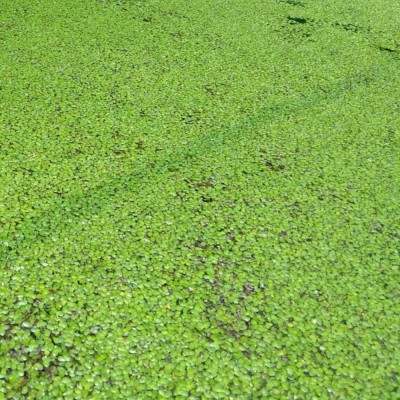Gachwala Duckweed, Spirodela polyrhiza, Aquatic Plants for Pond / Aquarium, Lemna Minor Seed(250 per packet)
Quick Overview
Product Price Comparison
The duckweeds floats on or just beneath the surface of still or slow-moving bodies of fresh water and wetlands. Also known as bayroot, water lentils, or water lences.The greater part of each plant is a small organized "thallus" or "frond" structure only a few cells thick, often with air pockets (aerenchyma) that allow it to float on or just under the water surface. Depending on the species, each plant may have no root or may have one or more simple rootlets.These plants have a simple structure, lacking an obvious stem or leaves. The greater part of each plant is a small organized "thallus" or "frond" structure only a few cells thick, often with air pockets (aerenchyma) that allow it to float on or just under the water surface. Depending on the species, each plant may have no root or may have one or more simple rootlets.One of the more important factors influencing the distribution of wetland plants, and aquatic plants, in particular, is nutrient availability. Duckweeds tend to be associated with fertile, even eutrophic conditions. They can be spread by waterfowl and small mammals transported inadvertently on their feet and bodies, as well as by moving water. In water bodies with constant currents or overflow, the plants are carried down the water channels and do not proliferate greatly. In some locations, a cyclical pattern driven by weather patterns exists in which the plants proliferate greatly during low water-flow periods, then are carried away as rainy periods ensue.One of the more important factors influencing the distribution of wetland plants, and aquatic plants, in particular, is nutrient availability. Duckweeds tend to be associated with fertile, even eutrophic conditions. They can be spread by waterfowl and small mammals transported inadvertently on their feet and bodies, as well as by moving water. In water bodies with constant currents or overflow, the plants are carried down the water channels and do not proliferate greatly. In some locations, a cyclical pattern driven by weather patterns exists in which the plants proliferate greatly during low water-flow periods, then are carried away as rainy periods ensue., duckweed also may be used for wastewater treatment to capture toxins and for odor control and that if a mat of duckweed is maintained during harvesting for removal of the toxins captured thereby, it prevents the development of algae and controls the breeding of mosquitoes. Duckweed also may play a role in the conservation of water.Duckweed is an important high-protein food source for waterfowl. The tiny plants provide cover for the fry of many aquatic species. The plants are used as shelter by pond-water species such as bullfrogs and fish such as bluegills. They also provide shade and, although frequently confused with them, can reduce certain light-generated growths of photoautotrophic algae. The plants can provide nitrate removal if cropped, and the duckweeds are important in the process of bioremediation because they grow rapidly, absorbing excess mineral nutrients, particularly nitrogen and phosphates. For these reasons, they are outed as water purifiers of untapped value. The Swiss Department of Water and Sanitation in eveloping Countries, associated with the Swiss Federal Institute for Environmental Science and Technology, asserts that as well as the food and agricultural values, The same publication provides an extensive list of references for many duckweed-related topics.Research and applications of duckweeds are promoted by two international organizations, The International Lemna Association and the International Steering Committee on Duckweed Research and Applications.In July 2008, the U.S. Department of Energy (DOE) Joint Genome Institute announced that the Community Sequencing Program would fund the sequencing of the genome of the giant duckweed, Spirodela polyrhiza. This was a priority project for DOE in 2009. The research was intended to facilitate new biomass and bioenergy programs. The results were published in February 2014. They provide insight into how this plant is adapted to rapid growth and an aquatic lifestyle.Duckweed also functions as a bioremediator by effectively filtering contaminants such as bacteria, nitrogen, phosphates, and other nutrients from naturally occurring bodies of water, constructed wetlands, and wastewater.


